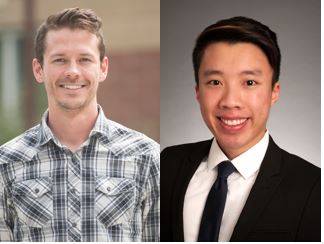– Story by Angela Fairbanks, content writer in the College of Health Sciences
Hands-on laboratory learning is a major tenet of some of the largest programs at Boise State from the College of Health Sciences to the College of Engineering. The lab classroom is where students get to experience the concepts they are learning in lectures and apply those theories to inform and change the world around them.
But what happens when students can’t gather in classrooms for experiential learning? At the Micron School of Materials Science Engineering (MSMSE), faculty brought laboratory learning to their students through the postal service.
This new delivery model came as a response to university COVID-19 physical distancing guidelines and may have more applications in the future for delivering laboratory learning to remote students across the country. “Everyone thinks we need complicated tools to teach engineering concepts, but that’s not true,” said Scott Birks, graduate teaching assistant and doctoral researcher at MSMSE. “There is so much room for creative learning in your kitchen, your bathroom, or your garage. And sometimes it’s more fun that way.”

Birks worked with Will Hughes, professor of materials science engineering and graduate teaching assistant and fellow doctoral researcher Tim Phero to teach MSE245L, Introduction to Materials Science and Engineering lab. They adapted the course for remote electrical, mechanical, and materials science engineering students. The team re-designed their regular curriculum for home, packaged the necessary materials, and shipped everything to students’ doorsteps.
Students were sent laboratory materials they couldn’t find at home such as samples of specific metals or heating and cooling packs for thermodynamic labs. The MSE245L team then incorporated common household resources like table salt, pots and pans, or ovens for heat-treating their material. The students were provided 80% of what they needed to complete a lab and were then encouraged to explore their environment to find the rest. In this way, students had the opportunity to creatively solve problems on their own.

“One lab activity that transitioned really well was ‘How does glass break?’ Glass is a more complex material than it looks, and it can break in unpredictable ways,” Phero said. “On campus, we have a device that applies pressure to a sheet of glass to showcase that unpredictability. At home, we sent them a rectangular pane of glass and they made their own version.”
For this experiment, students laid their panes of glass over pencils or pens to resemble a table top, then slowly applied pressure by adding water bottles, books or anything else around their homes. Phero said the crystal-growing lab was also popular with students,and some were competing to see who could grow the “biggest” and “coolest” home crystals.
A student, who asked to remain anonymous, who took the course in fall 2020 said, “I was worried it was going to be similar to the makeup assignments you get when you’ve missed a class; I didn’t want to get a set of fake data and crunch some data. With this class, there was so much to do and I got to fill in the blanks myself.”
More and more universities have begun offering engineering coursework online over the years, even prior to COVID-19. Arizona State University, Texas A&M University, and the Georgia Institute of Technology all offer undergraduate or graduate engineering degrees exclusively online.
Now, many programs across Boise State are starting to consider what the fall 2021 semester will look like.
“When we come back full-time, we need to continue the conversation about access and how to serve students who cannot come onto campus for reasons not related to COVID-19,” Hughes said. “Those students were there before, and they will be here after. We can take what we have learned and turn it around to invest in our future – which is our students.”